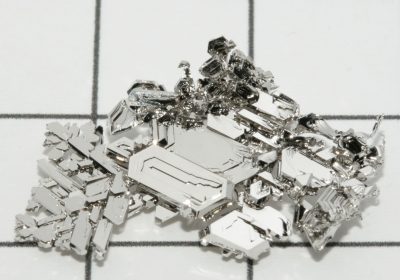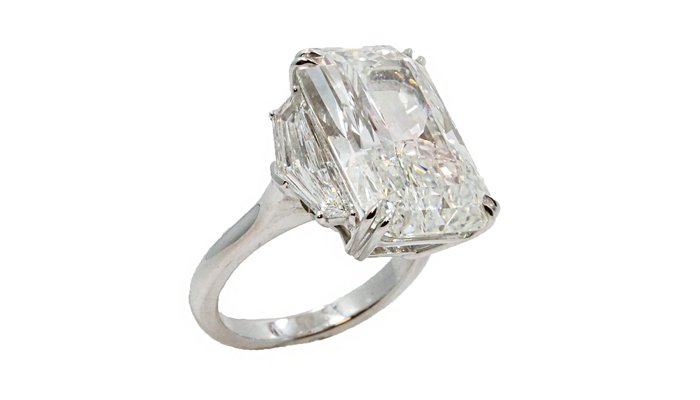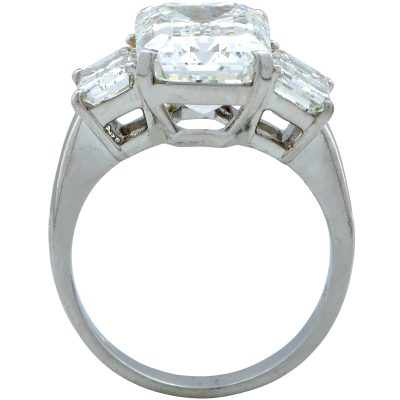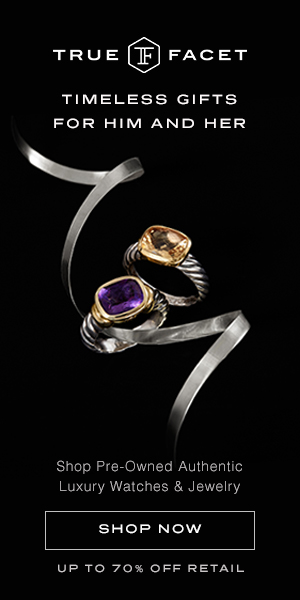Understanding Platinum Jewelry
Platinum is one of the most popular metals for jewelry-making, especially when it comes to wedding rings. This super-strong metal lasts for generations and requires far fewer check-ups for retouching at the jeweler. However, it has its setbacks, too. We’ve rounded up everything you need to know about platinum jewelry, from the formulation of platinum, to care and storage methods, to cost, and everything in between.
Color

Platinum crystals
Platinum is naturally a brilliant, grayish-white color. Over time, the metal does develop a patina that might make it look a little dull, but some people prefer this look since it makes diamonds look bigger. However, it can be quickly polished to restore its luster as needed.
Care & Storage
Platinum is a very durable metal. It can be scratched, but it won’t crack or chip. The difference between platinum and other precious metals when it comes to damage is that when metals like gold are scratched, they actually lose tiny pieces of metal while scratches on platinum simply displace the metal. This is why gold and silver wears down relatively quickly and platinum looks new for years and years.
Platinum also doesn’t usually have any plating on it while gold and silver often do. That’s why scratches don’t often show up as easily when a gold piece is freshly plated, but as that plating wears down, not only will scratches become much more visible, but the metal of the jewelry itself will also start to degrade. Platinum does not have that problem. That and its hardness mean this metal does not require as much regular maintenance or as many trips to the jeweler as gold and silver do.
However, that doesn’t mean it can be freely tossed around! Like all jewelry made of precious metals, platinum jewelry should be kept separate from other jewelry in a fabric-lined or padded container. It should be noted, though, that this piece of advice is less for the sake of your platinum jewelry and more for the safety of your other jewelry. Pieces made out of soft metals like high karat gold or silver could easily sustain damage just by brushing up against platinum jewelry, so make sure you store them separately.
Formulation
Almost all precious metals used for jewelry are alloyed with base metals, usually to change the metal’s tone, hardness, or pliability. Platinum is no different. This precious metal is commonly alloyed with palladium, ruthenium, rhodium, copper, iridium, and titanium. Many manufacturers of luxury jewelry tend to lean towards platinum/ruthenium or platinum/palladium alloys since these metals have an excellent white color and make the platinum more malleable, making it easy to mold it into the shape of a finely-designed ring. Once set and polished, however, these alloys become incredibly durable. Due to the hardness, they tend to take on a very high luster.
In addition to being durable and very lustrous, platinum alloys are also usually hypoallergenic. Since platinum is usually alloyed with other durable metals within its own chemical family, you can rest assured that you won’t find any nasty green rings or white, crusty residue on your hands after wearing a platinum ring for a while. That is, of course, unless your platinum is alloyed with copper, which tends to oxidize on skin, leaving a green residue. Always be sure to ask what metals your jewelry contains before you purchase them to make sure they won’t cause any allergic or oxidation reactions.
Common Settings

A diamond and platinum engagement ring
Because of platinum’s high shine and durability, it is by far the favorite for use in setting engagement rings and wedding rings. It is a very dense metal, though, and it can feel quite heavy, which could be a setback for some since the weight of the ring could be uncomfortable. Some people do like the hefty feeling of a platinum ring, however, so you should try one on for a while and see if you like the weight of the ring.
Platinum is also sometimes used in necklaces, especially by Tiffany & Co. Though it is very strong, when heated to become malleable, platinum is very ductile, meaning it’s easy for jewelers to draw it out into thin strands. Tiffany & Co. takes advantage of platinum’s unique properties to fashion beautiful pendant necklaces on thin platinum chains that are much harder to break and much more long-lasting than their sterling silver counterparts.
Platinum is also used in high-end watches as a heavier, more luxurious replacement for traditional stainless steel cases and bracelets. Brands like Rolex, Patek Philippe, A. Lange & Sohne, and Vacheron Constantin, among others, are fond of this technique.
Cost

This Harry Winston 5 ct. diamond engagement ring with a platinum band costs $197,550.
As you can imagine, platinum is very popular, since it’s practically the perfect metal for jewelry-making. However, it is also incredibly scarce in the Earth’s crust, and only a few hundred tons of it are produced per year. As such, the high demand for the metal and the extremely low supply really drive the price up for this precious metal.
Most pure platinum jewelry tends to ring in at around $1,000 apiece on the low end of the spectrum, with very simple, thin platinum wedding bands bottoming out at about $300 apiece. On the extremely high end, pure platinum jewelry can cost you hundreds of thousands of dollars!
The nice thing about platinum, though, is that there is platinum jewelry made to fit most jewelry budgets. Whether you end up spending $1,000 or $100,000 on your platinum jewelry, you can be sure that this amazing metal will last for generations.
If you’re interested in learning more about other precious white metals, check out for a quick run-down of the core properties of platinum, white gold, palladium, silver, and titanium. Or, you can visit this post for help with figuring out which precious white jewelry metal is best for your needs!







